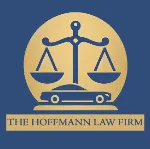Shoulder injuries can result from different types of traumatic events, the most common ones being car wrecks.

Shoulder injuries can range from soft tissue injuries to serious ones such as fractures and dislocation.
Soft Tissue Injuries
Car accidents can lead to a variety of soft tissue injuries, including whiplash and shoulder impingement. Shoulder impingement happens when the rotator cuff tendon is pinched by the bone on top of the shoulder. Rotator cuff damage also occurs when trauma causes the bursa to become inflamed. The bursa is the lubricating sac that helps tendons to move freely. Another type of injury that car accident victims experience is a torn rotator cuff. These shoulder injuries can cause severe pain and limited range of motion and may require surgical intervention.
Common symptoms of a tear in the shoulder socket
Most symptoms of a tear in the shoulder socket are similar to that of many other major shoulder injuries. These include:
- A feeling of instability in the shoulder
- Locking or popping sensation or sound
- Pain when performing overhead activities
- Decreased strength
- Inability to sleep on the shoulder and nighttime pain
- A decrease in range of motion
Diagnosing a torn labrum/shoulder socket
This injury is generally diagnosed by physical exams and clinical observations. A doctor will also take the medical history of the accident victim, and ask how exactly the injury occurred. The doctor will perform several tests to determine stability, mobility and the kind of motions that cause pain.
Irregularities in bones are diagnosed using X-rays, however, they are not useful in the diagnosis of glenoid labral tears, because the glenoid labrum is not made of bone, and is instead composed of soft tissue. An MRI or CT scan is typically the best test for diagnosis of a glenoid labrum tear.
How is a torn labrum treated?
A torn labrum is a painful injury and restricts movement. The treatment usually depends on the type and severity of the tear. If the car accident victim is not experiencing serious pain, discomfort and other discomforts the doctor may just prescribe rest and anti-inflammatory medications. The doctor may also recommend physical therapy to strengthen the muscles around the labrum. This can greatly reduce the stress and tension on the labrum, and give it time to heal. However, if the injury is extremely serious, the patient may have to undergo surgery. Arthroscopic surgery is used when all other treatment options fail.
Types of shoulder dislocations
There are three main types of shoulder dislocations that can occur when there is a blow to the shoulder.
Anterior or forward dislocation
Anterior dislocation of the shoulder bone is one of the most common types of shoulder dislocations. The anterior dislocation accounts for about 95% of all dislocations, and are mostly caused by a direct blow to an outstretched arm. An anterior shoulder dislocation can be sub-coracoid, under the clavicle, retroperitoneal or intrathoracic.
Posterior or backward dislocation
Posterior dislocations are often caused when a person suffers an electric shock or a seizure. They are also caused if there is a strength imbalance in the rotator cuff muscles. Posterior or backward dislocations, at times, can be missed by doctors in an elderly person or a person in a coma.
Inferior or downward dislocations
Inferior or downward dislocations are rare and make up only 1% of all shoulder dislocations. Inferior or downward dislocations occur if the humeral head gets pushed up against the acromion, caused due to the excessive abduction of the arm. Inferior or downward dislocations cause a number of complications as such dislocation damages many vascular and neurological structures, tendons and ligaments.
Shoulder dislocation symptoms
The most obvious symptom of a shoulder dislocation is acute pain that originates in the shoulder and spreads to surrounding areas like the back, arm, chest, and neck. The arm cannot be moved from its position.
A visible distortion of the shoulder is seen and numbness in the affected arm is another symptom of shoulder dislocation. While all shoulder dislocations have no palpable bone in the shoulder area, some dislocations can make the shoulder look boxy.
Complications in a shoulder dislocation
Apart from the actual shoulder dislocation injury, one can experience certain complications as well, depending on the extent of the impact one faces in the car accident.
- A fracture in the humeral head is a commonly found complication and is associated with about 25% of shoulder dislocations.
- It has also been seen that about 75% of anterior dislocations have a Hill-Sachs deformity in the shoulder.
- At times, patients with shoulder dislocations can injure a nerve as a result of the shoulder fracture. A nerve injury often results in numbness in the nerve region. Never injuries often heal within a few weeks, however, at times, they can affect the strength of the deltoid muscle if it does not heal well.
- Older patients with a shoulder dislocation often have a complication with an injury to the rotator cuff muscles, which can be easily missed until the sling is off.
- A rare complication resulting from a shoulder dislocation is rupturing or tearing of the axillary artery, the main artery that supplies blood to the arm.
- A brachial plexus injury can also be an outcome of a shoulder dislocation.
Shoulder Decompression
Car accidents can lead to a variety of aches and pains. Among the most common body part to get injured in a car accident is the shoulder. There are many types of treatments available for shoulder injuries; however, when all conservative forms of treatment fail, a doctor may recommend a procedure called shoulder decompression.
Shoulder decompression, also known as subacromial depression, is the cleaning and repairing of damaged tendons around the shoulder and upper arm area. It is a surgical procedure that is performed to treat soft tissue injuries. The initial course of treatment for shoulder injuries is typically conservative. This includes restrictions on certain activities, missed time from work to rest, and anti-inflammatory medication.
When conservative treatment fails to relieve symptoms or when they become worse over time, a doctor may recommend physical therapy or cortisone injections. However, when these treatments do not work, surgery could be an option. Surgery involves removing structures such as bone spurs or an inflamed bursa to give more space to prevent impingement of surrounding structures.
Shoulder Fractures
Broken bones in the shoulder are known as shoulder fractures.
Shoulder fractures are broken bones in the shoulder. There are mainly three types of shoulder fractures that can result from traumatic events, like a car accident.
A fractured collarbone or clavicle is one of the common types of shoulder fractures. Other examples include a broken shoulder blade or scapula and a broken proximal humerus, which is the top part of the upper arm.
While most shoulder fractures are treatable, in some cases, the car accident victim is left with some kind of permanent disability. Shoulder fractures often cause severe pain, and the recovery period can be quite long.
Prognosis of Shoulder Decompression Surgery
In many cases, shoulder decompression is done arthroscopically, which is a minimally invasive type of procedure requiring only a small incision. Arthroscopic shoulder compression has a shorter recovery period; however, it also depends on the extent of the damage. Some patients may require open surgery. The recovery period for shoulder decompression ranges between a week and several months, depending on the nature of the injury and the extent of the damage. Rehabilitation may also be required.
St. Louis Car Accident Lawyers
The cost of treatment for a shoulder decompression is high. The costs for surgery and rehabilitation may be recovered through a car accident claim if the accident was a result of someone else’s negligence. If the injury is serious enough to prevent the victim from returning to his or her previous job, this will also impact the claim. Talk to a St. Louis auto crash lawyer. Call The Hoffmann Law Firm, L.L.C. at (314) 361-4242 for a case evaluation.
